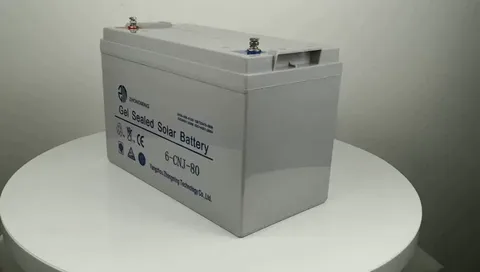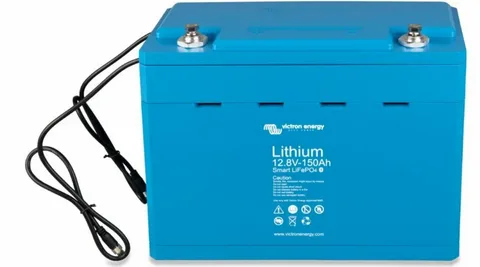Renewable energy is increasingly important in today’s world as we seek to reduce our reliance on fossil fuels and mitigate climate change. Lifepo4 batteries, especially the 150Ah variant, are gaining attention for their exceptional performance, safety, and durability. They are used in off-grid solar systems, electric vehicles, and renewable energy storage. This guide will cover the powerful Lifepo4 150ah batteries’ technical specifications, benefits, uses, and maintenance.
What is a 150-ah lifepo4 battery?
At the heart of any off-grid or renewable energy system lies the battery, a crucial component that stores energy for later use. Among the various types of batteries available, one stands out for its reliability, sustainability, and impressive performance – the 150-ah lifepo4 battery. But what exactly is a 150-ah lifepo4 battery, and what makes it unique?
Lifepo4, short for Lithium-Iron-Phosphate, is a rechargeable battery that has gained widespread popularity recently. It is known for its exceptional safety features, long lifespan, and eco-friendly characteristics. The “150Ah” part refers to the battery’s capacity, measured in Ampere-hours (Ah). In simple terms, the battery can store and release 150 Ampere-hours of energy.
In practical terms, a 150-ah lifepo4 battery can power a wide range of devices and systems, from small appliances and lights to entire homes and commercial properties. Its impressive energy storage capacity and long lifespan (typically 10-15 years) make it an ideal choice for applications that require a reliable and sustainable energy source. This comprehensive guide will delve deeper into the world of 150Ah Lifepo4 batteries, exploring their benefits, applications, and best practices for their installation and maintenance.
Benefits of Using 150Ah Lifepo4 Battery
As you delve into the world of 150ah lifepo4 battery, it’s essential to understand the numerous benefits that make them an attractive choice for a wide range of applications.
- One of the most significant advantages of using 150Ah Lifepo4 batteries is their exceptional deep discharge recovery capabilities. This means they can withstand the rigors of frequent deep discharging and still retain a significant amount of their capacity, making them ideal for off-grid, renewable energy, and backup power solutions.
- Another critical benefit of 150Ah Lifepo4 batteries is their impressive cycle life. With a lifespan of up to 2,000 charge cycles, they can withstand the demands of repeated charge and discharge cycles, making them a reliable choice for applications that require frequent usage. This extended cycle life also significantly reduces maintenance costs, as they require less frequent replacement and upkeep.
- 150Ah Lifepo4 batteries are an environmentally friendly option. They are free from toxic heavy metals like lead and cadmium, commonly found in traditional lead-acid batteries. This makes them an attractive choice for industries and applications prioritizing sustainability and reducing their environmental footprint.
- 150Ah Lifepo4 batteries are known for their high efficiency and low self-discharge rates, making them an excellent choice for applications requiring high reliability and uptime. They can retain up to 80% of their capacity after 30 days of storage, so they can be stored for extended periods without significant capacity loss.
 Applications of 150Ah Lifepo4 Batteries
Applications of 150Ah Lifepo4 Batteries
As the name suggests, 150Ah Lifepo4 batteries are a versatile and robust solution for many applications. With their impressive capacity and long lifespan, they have become a favorite among off-grid enthusiasts, environmentally conscious homeowners, and businesses looking to reduce their carbon footprint. This section will explore the various applications of 150Ah Lifepo4 batteries, highlighting their advantages and potential uses.
- One of the most popular applications of 150Ah Lifepo4 batteries is in off-grid solar systems. These batteries are designed to store excess energy generated by solar panels during the day, allowing homeowners to maintain a stable power supply at night or on cloudy days. Their ability to recharge quickly and discharge slowly makes them perfect for systems with intermittent energy generation.
- Another significant application of 150Ah Lifepo4 batteries is in renewable energy systems. In addition to off-grid solar systems, these batteries are used in wind-powered, hydroelectric, and other renewable energy sources. Their high capacity and long lifespan make them an ideal choice for storing energy generated by these sources.
- 150Ah Lifepo4 batteries are used in electric vehicles, backup power systems, and grid-scale energy storage. Their ability to provide a stable and consistent power supply makes them an attractive solution for applications that require a reliable energy source.
Key Features and Specifications of Lifepo4 Battery 150Ah
Here’s a brief overview of the key features and specifications of a LiFePO4 Battery 150Ah:
Chemistry and Safety
LiFePO4 chemistry offers enhanced safety with a stable chemical structure, reducing risks of thermal runaway and fire.
Capacity
The 150Ah capacity provides ample energy storage for various applications, including marine, RV, solar energy storage, and electric vehicles.
Voltage
Typically operates at a nominal voltage of 3.2V per cell, making it compatible with systems requiring 12V, 24V, or higher voltages through series connections.
Cycle Life
Offers a long cycle life of up to 2000 cycles or more, depending on usage conditions and depth of discharge (Dodd).
Charging Efficiency
High charging efficiency with minimal energy loss during charge and discharge cycles, contributing to overall energy savings.
How to Choose the Right 150-ah lifepo4 battery for Your Needs?
When selecting the perfect 150-ah lifepo4 battery for your specific needs, you must consider several factors to make the right choice. This may seem daunting, but by breaking down the key considerations, you’ll be well on your way to finding the ideal battery for your requirements.
- It’s essential to think about the intended application of your 150-ah lifepo4 battery. Are you looking for a battery to power your off-grid solar system, a backup system for your home, or a deep-cycle battery for your RV? Each of these applications requires unique characteristics, and choosing the correct battery can make all the difference in its performance and longevity.
- You’ll want to consider your system’s capacity and voltage requirements. A 150-ah lifepo4 battery can provide a significant amount of power, but it’s essential to ensure that the battery is compatible with your existing system. Look for a battery that can be charged and discharged at the correct rate and has the necessary voltage and amperage ratings.
- Another critical factor to consider is your battery’s depth of discharge (DOD). Lifepo4 batteries are known for their ability to be deeply discharged without sustaining damage, but it’s still important to consider the recommended DOD to ensure optimal performance and longevity.
- Consider the warranty and support offered by the manufacturer. A reputable manufacturer should stand behind its product and offer a comprehensive warranty, as well as dedicated customer support for any questions or concerns you may have.
Installation and Maintenance of 150 Ah Lifepo4 Battery
Installing and maintaining your 150 Ah Lifepo4 battery is crucial in ensuring their optimal performance and longevity. Unlike traditional lead-acid batteries, Lifepo4 batteries require a more careful approach to installation and maintenance to unlock their full potential. This section will delve into the specific guidelines and best practices for installing and maintaining your 150Ah Lifepo4 batteries. Ensuring that your batteries are installed in a well-ventilated area, away from any heat sources or flammable materials, is essential.
This is crucial because Lifepo4 batteries generate heat during charging and discharging, which can be hazardous if not properly ventilated. Installing the batteries in a protective casing or enclosure is recommended to prevent accidental damage or exposure to the elements. When it comes to maintenance, Lifepo4 batteries require minimal upkeep compared to traditional lead-acid batteries. However, performing regular checks on the battery’s state of charge, voltage, and temperature is still critical.
This can be done using a millimeter or a dedicated battery management system (BMS). It is also recommended that the batteries be charged and discharged regularly to maintain their capacity and prevent deep discharge. it is important to note that Lifepo4 batteries are sensitive to extreme temperatures and should be stored between 0°C and 40°C (32°F and 104°F) when not in use. It is also recommended that the batteries be kept away from any sources of moisture, as they can be damaged by exposure to water or humidity.
Charge and Discharge Cycle of Lifepo4 150ah Battery
As we delve into the intricacies of lifepo4 150ah battery, it’s essential to understand the charge and discharge cycle that governs their performance. This cycle is critical to battery life, as it determines its overall capacity and lifespan. A 150-ah lifepo4 battery’s charge cycle replenishes the battery’s energy storage capacity. This is typically achieved through a controlled charging process involving a gradual increase in voltage and current.
The optimal charging regime for 150Ah Lifepo4 batteries is characterized by a slow and steady charge, which helps prevent overcharging and maintain the battery’s health. On the other hand, the discharge cycle uses the stored energy in the battery. This is typically achieved through a load, such as a device or system, which draws power from the battery. The optimal discharge rate for 150Ah Lifepo4 batteries is also critical, affecting the battery’s capacity and lifespan. A slow and controlled discharge rate is essential to prevent excessive heat buildup and maintain the battery’s integrity.
Safety Precautions for Lithium Iron Phosphate Battery 150ah
When handling lithium iron phosphate battery 150ah, it’s crucial to prioritize safety above all else. Despite their impressive energy density and long lifespan, these batteries still require careful handling to ensure optimal performance and prevent potential risks. One of the most critical safety precautions is to handle the batteries with dry, non-conductive gloves to prevent accidental short-circuiting. It’s essential to keep the batteries away from flammable materials, sparks, and open flames, as they can be prone to thermal runaway under certain conditions. When transporting the batteries, it’s vital to ensure they are securely packaged and protected from physical damage.
A sturdy case or container with padding can help prevent accidental drops or bumps, which could compromise the battery’s internal structure and lead to leakage or even a fire. Another important handling tip is to keep the batteries away from water and moisture, as Lifepo4 batteries can be sensitive to humidity and humidity changes. It’s also recommended that the batteries be charged in a well-ventilated area, away from combustible materials, and to avoid overcharging or undercharging, which can lead to reduced lifespan and performance.
Conclusion
As we conclude our comprehensive guide to unlocking the power of Lifepo4 150Ah batteries, we hope you now understand the benefits and capabilities of this cutting-edge technology. From their eco-friendly design to their impressive storage capacity, 150Ah Lifepo4 batteries are an exciting development in renewable energy. Whether you’re a seasoned pro or just starting your journey, we’re confident that this guide has empowered you to make informed decisions and harness the full potential of these powerful batteries. Thank you for joining us on this journey, and we look forward to seeing the innovative ways you’ll put this technology to use.
FAQs
What does 150Ah mean?
150Ah refers to the battery’s capacity, specifically 150 amp-hours. It indicates how much charge the battery can deliver over a specific period, usually hours.
What are the advantages of 150ah lifepo4 battery?
150ah lifepo4 battery offer high energy density, longer cycle life (typically 2000-5000 cycles), excellent thermal stability, and are environmentally friendly compared to other lithium-ion chemistries.
Where are LiFePO4 150-Ah batteries used?
Due to their reliability and long lifespan, they are commonly used in renewable energy storage systems (like solar), electric vehicles, marine applications, and backup power supplies.
| Related Business Listings |
| Contact Directory |
| Local Business Profiles |



